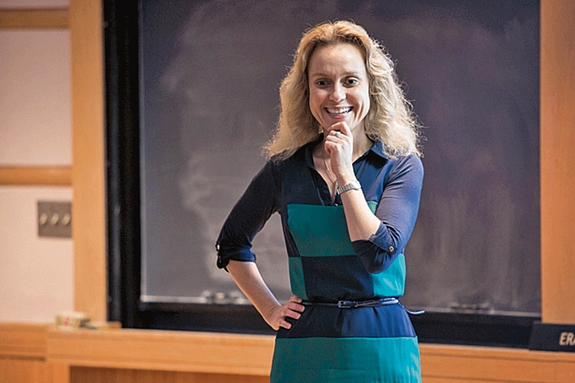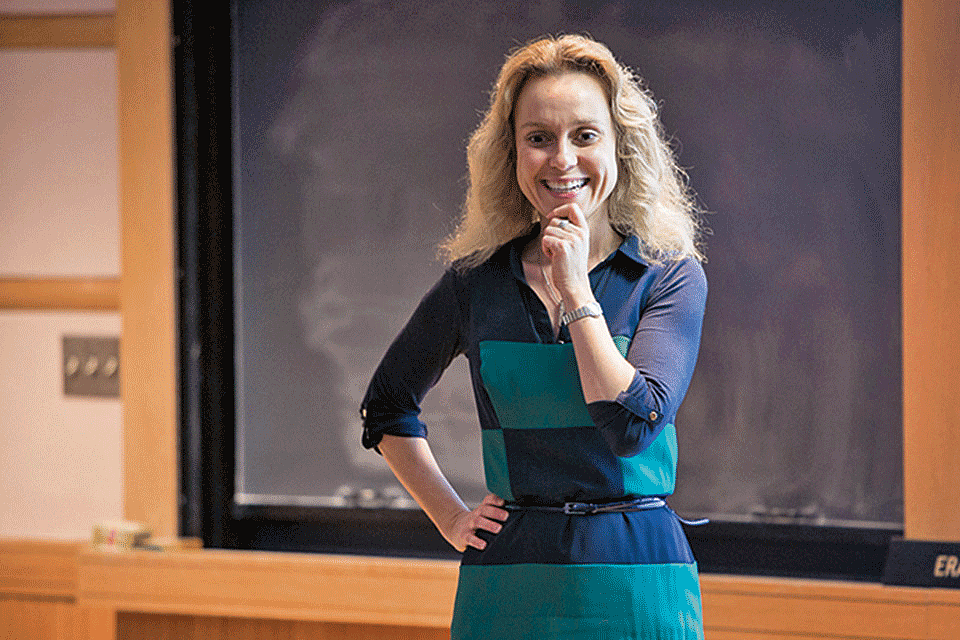My Random Walks with Pólya and Szegő

My love affair with George Pólya began when I was seventeen. It was in Chelyabinsk, Russia, and my first year at the university was coming to an end. I had come across a tiny local library with an even tinier math section, which nobody ever seemed to visit, and had taken out most of those math books one by one before I came across The Book. It was George Pólya’s Mathematics and Plausible Reasoning.
By that time I was a total bookworm, having devoured almost a thousand volumes of my parents’ home library, mostly fiction. My familiarity with math books was much poorer although, growing up, I had enjoyed Yakov Perelman’s popular books for children on math and physics. I was a proud graduate of a specialized math and physics school, the only one in town, and had had a few wins at local olympiads in math and science. A top kid in class as far back as I could remember, I was arrogant as hell.
I read the introduction to Mathematics and Plausible Reasoning and its Chapter I standing up next to the bookshelf. It read like a novel. A cerebral one alright, which made you pay quick attention. Chapter I started out in the least orthodox way, comparing mathematical induction to a domino chain. The book endeavoured to explain not only what was mathematically true but how and why. I was hooked. Chapter I ended with a list of problems. I solved a couple of them still standing up but quickly came to a halt on Problem 3.
The arrogance kicked in––I had to solve those problems. I still remember carrying that book home after I checked it out. It was late spring, gorgeous weather, bird songs in the air, romantic couples––you get the picture. I was besotted with The Book.
The Book problems proved to require quite a bit of effort, so I had to wait until summer to properly work on them. In August, I was sent away for three weeks to a place administered by the university where faculty, staff, and students went “to recuperate.” I have zero recollection how this came about. Surprisingly, my parents let me go since I convinced them I needed total concentration to work on my book.
This was my initiation to the mysteries of higher mathematics. Waking up every day, reading Pólya, walking around the lake, turning his problems around in my head until I would find a solution. I shared a room with two cheerful women over forty, which of course seemed very old to me at the time. As far as I can recall, they were mostly interested in male company. After initial distrust followed by observations of my religious fervor toward The Book, they deemed me harmless and became exceedingly nice, bringing chocolates and such back after their parties.
I had a blast. I solved all problems on my own, using only the hints given in The Book. My arrogance was transformed into patience and respect toward math problems that may require a day, a week, or even years to solve. I finished the book on August 19, 1991, my birthday. It was also the day of the bizarre August Putsch. For two days, the country was in a surreal time warp, most fearing a relapse into a Soviet-like state. When it was over, the sense of relief was quite profound. I must admit, however, that my celebratory mood was largely due to a happy love affair with The Book.
A few years passed. I learned quite a bit more about George Pólya and his mathematics. Born a Hungarian Jew, baptized Catholic, grown up agnostic, turned Swiss, turned American, Pólya worked in analysis, mathematical physics, probability theory, geometry, and combinatorics. His passion for teaching led him to write several hugely successful books about mathematical discovery of which Mathematics and Plausible Reasoning was one. But his crown jewel was a book written with his coauthor and friend Gábor Szegő, Aufgaben und Lehrsätze aus der Analysis (Problems and Theorems from Analysis). I kept trying to get hold of anything by Pólya that I could. With the Soviet Union collapsed, education funding scarce, libraries closing, I could not get hold of that book.
Pólya worked in Zürich, Oxford, Cambridge, Princeton, Brown, and Stanford. I cannot describe how these places sounded to me, sitting in Chelyabinsk in 1993 on a “diet” of tea, bread, and sour cream––that was all we had. There was no money either. My parents’ life savings were lost in the bank freeze of 1991 (or 92? I am blanking out); no salary or stipends arrived for months. I tutored high school kids but their parents were going through the same. The powers that be––and regular people in Russia––were quickly losing interest in science. So Zürich, Oxford, Stanford and the like sounded like Eden to me. An academic Eden where you could do mathematics, uninterrupted by worries about money or sour cream. Was that even real? It sounded exotic, thrilling, fantastic. But of course I could never get there––how could I?
When something appears absolutely impossible, it may be quite straightforward. Three years later, with three publications in international math journals, I was admitted to the University of Wisconsin–Madison. (This is another story for another time about how someone completely ignorant can still succeed.) Before leaving Chelyabinsk, I made a trip to my favorite used book store. It had a translation of Problems and Theorems! This is how I left for the United States with Pólya and Szegő.
Madison turned out to be a splendid place, very much influenced by Pólya and Szegő’s mathematics. I was advised by Hans Schneider, once an Austrian refugee turned British turned American, whose life and career has been just as amazing as that of George Pólya. I also learned an awful lot from Dick Askey, Walter Rudin, Carl de Boor, and many others there. My only regret about Madison is not overlapping with Isaac Schoenberg, a friend and collaborator of Pólya and Szegő. Schoenberg passed away in 1990.
Life is stranger than fiction, which is no platitude. Years later, I use Problems and Theorems to train advanced math majors at the University of California, Berkeley, for the Putnam competition, a North American contest for college students in mathematics. I have visited and worked at all those exalted places I could not even dream about twenty years ago in Russia.
I have even found myself solving some problems that originated with Pólya and Szegő. One recent story of this kind is my joint work with three Russian coauthors, Maxim Derevyagin, Sergey Khrushchev, and Mikhail Tyaglov, where we obtained a matrix version of a beautiful Szegő theorem about orthogonal polynomials. The original theorem ties up the recurrence coefficients of an orthogonal family to a single integral expression of the underlying measure. As we gradually came to understand, orthogonal polynomials do not have to be scalar-valued but can take matrix values; the theory becomes much more involved but many mathematical facts generalize.
David Damanik, Alexander Pushnitski, and Barry Simon, in their comprehensive survey on matrix-valued orthogonal polynomials, posed a challenge to generalize Szegő’s theorem to the matrix setting. Being at the same place (Berlin) at the same time, my coauthors and I could not resist. After a couple of months of Pólya-style plausible––and then rigorous––reasonings, we had a matrix generalization.
Sergey Khrushchev and I are now writing a book about the Laguerre-Pólya class, a fascinating class of entire functions that appears in analysis, combinatorics, number theory, and many other fields. We keep discovering small gems on the way. In one such exploration with Olga Kushel and Mikhail Tyaglov (a Russian job again), we came across a lovely Pólya-and-Szegő-like result about zeros of special polynomials. It generalizes an earlier result of Schoenberg and a much earlier result of Adolf Hurwitz, Pólya’s teacher. I recently presented it at IAS. After the talk, Peter Sarnak (Professor in the School of Mathematics) told me, “Too bad that two people who would have really appreciated this work are not around: Pólya and Szegő.”
One possibly apocryphal story told about Pólya is that he really liked to walk and, while on one of his walks, kept bumping into the same couple. The couple finally got annoyed and asked him if he was stalking them. Pólya assured them he wasn’t . . . and started thinking about the mathematical implications of this question. He subsequently discovered that a random walk in dimensions 1 and 2––but not higher––is recurrent, i.e., keeps coming back to the same point with probability 1.
My own walks in life, however random, were made so much more meaningful by those recurrent meetings with George Pólya and Gábor Szegő.